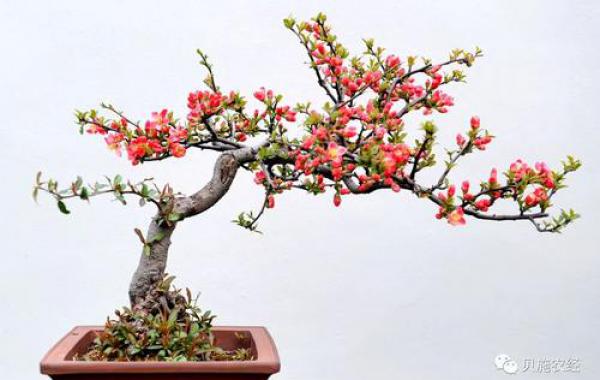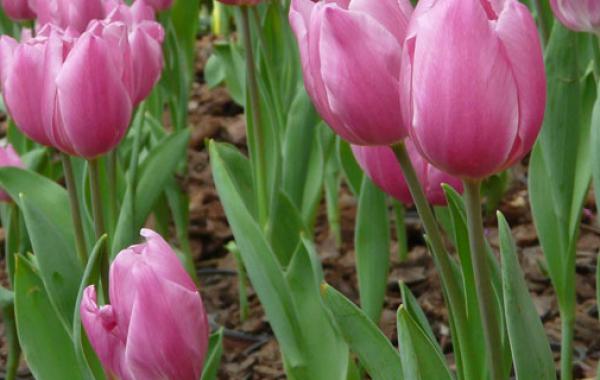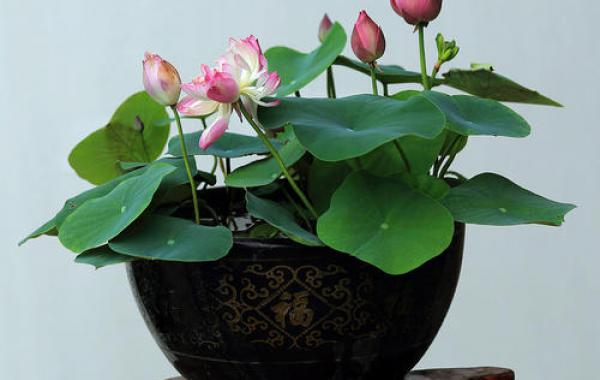What problems should be paid attention to in flower fertilization?

What problems should be paid attention to in fertilizing flowers.
1. Attention should be paid to the types of flowers when fertilizing. Different kinds of flowers have different requirements for fertilizer. For example, sweet-scented osmanthus and camellia like pig manure and avoid human feces and urine; flowers such as rhododendron, camellia and gardenia avoid alkaline fertilizers; flowers dominated by foliage can pay more attention to nitrogen fertilizer; flowers that mainly view large flowers (such as chrysanthemums, dahlias, etc.), it is necessary to apply an appropriate amount of complete fertilizer during flowering in order to make all flowers bloom and achieve shape and beauty. For flowers mainly viewing fruit, fertilizer and water should be properly controlled in the flowering period, and sufficient complete fertilizer should be applied in the strong fruit period in order to achieve the expected effect; bulb flowers should apply more potash fertilizer to enrich the bulb roots; fragrant flowers, entering the flowering stage, should apply more phosphorus and potash fertilizer to promote the strong flavor of the flowers; flowers that need to be re-cut every year need to increase the proportion of phosphorus and potash fertilizer to facilitate the germination of new branches.
2. Fertilization should pay attention to the peak period of flower growth in spring and autumn, the growth of roots, stems and leaves, the differentiation of flower buds and the expansion of young fruits, which all need more fertilizer, and more topdressing should be applied properly; in summer, the temperature is high and the water evaporates quickly, and it is the peak period of flower growth, so the concentration of topdressing should be small, and the times can be more; in winter, the temperature is low, the growth of plants is slow, and most flowers are stagnant and generally do not apply fertilizer. In addition, the application of organic fertilizer, must be fully mature, do not use raw fertilizer.
3. Fertilization should not be excessive according to the needs of flower growth, the seedling should be light and small, and the concentration and times of fertilization can be increased appropriately when the seedling is large. Flowers absorb nutrients from the soil solution through the roots, such as excessive fertilization and high concentration of the soil solution, so that the water of the cells in the roots is absorbed out of the body by the over-concentrated soil solution, resulting in scorched leaves and "burning" of the roots.
Organic fertilizer must be fully ripened before it can be applied. Because of organic fertilizers such as leaves, vegetable leaves, and fish offal, a lot of heat will be generated in the process of decay and fermentation. if it is not fully mature, it will be directly put into the roots of flowers, and the roots will be "burned to death" in the process of decay, fermentation and exothermic heat.
4. correctly grasp the usage and amount of base fertilizer and topdressing fertilizer applied to the soil before flower planting or potting is called base fertilizer, which is generally in the form of dry powder, such as livestock manure, bone meal, bean cake, etc., which is required to contain more nitrogen, phosphorus, potassium and other components, which is conducive to the improvement of soil structure, and can be decomposed continuously to ensure the continuous need for a long growth period. The base fertilizer must be rotten, applied under or around the root when planting flowers, but not in direct contact with the root, and the amount should be determined according to different types of flowers when potted. Base fertilizer is the basic nutrition of flower growth, which should be paid attention to.
During the growth of flowers, due to the luxuriant growth of branches and leaves, a large number of blossoms and fruit, consume a lot of nutrients, need to supplement fertilizer at any time, which is called topdressing. Topdressing is mainly liquid fertilizer, which is beneficial to soil absorption and root utilization.
Topdressing can apply both inorganic fertilizer and organic fertilizer. Inorganic fertilizers must pay attention to the appropriate concentration, usually 0.1-0.5%, so as to avoid harm caused by excessive concentration; organic fertilizers must be fully mature, and the principle of "a small amount of meals" should be grasped.
5. How to carry out foliar fertilization is to let the fertilizer dissolve in water and spray on the leaf surface, and infiltrate into the leaf through the stomata or cuticular layer of the leaf surface for plant use.
Not any fertilizer can be used for foliar fertilization, only fertilizers with high solubility such as urea, ammonium nitrate, potassium sulfate, potassium dihydrogen phosphate, calcium superphosphate and mature human feces and urine can be used for foliar fertilization. The application of liquid chemical fertilizer should be diluted 200 to 500 times with water, and it should be used when the temperature is low and the humidity is high, preferably in the morning. The fertilizer should be soaked before use, let it fully dissolve and filter out the insoluble matter; it can also be mixed with fungicides and pesticides to achieve double effect.
6. How to use calcium superphosphate (phosphate fertilizer) is the main variety of phosphate fertilizer produced in China, which is generally gray-white powder and acid available phosphate fertilizer. It is suitable for all kinds of soil and all kinds of flowers, and can be used as base fertilizer, topdressing fertilizer and seed fertilizer.
When it is used as base fertilizer, it should be fully mixed with soil, and it is best to be mixed with organic fertilizer, and it can also be used as extra-root topdressing of flowers before and after flowering. The spraying concentration of calcium superphosphate is generally 1% 3%. The specific method is as follows: 5 kg of calcium superphosphate is first called, 5 kg of water is added, 10% of the mother liquor is made, fully stirred, left for 12 hours, after the gypsum insoluble in water is sunk, the upper clear liquid is quantitatively taken out, and diluted with water according to the required concentration. The time of topdressing outside the root should be carried out in the morning when there is no dew or around dusk, so that the fertilizer solution can be retained on the leaves for a long time to facilitate stomatal absorption.
7, how to use urea ordinary urea is white crystal, strong hygroscopicity, is a kind of neutral fertilizer, nitrogen content up to 45% 46%, application can add 8 times 10 times fine dry soil to mix well and use. Urea can be used as extra-root topdressing, the solution concentration is 0.51%, and the concentration at flowering stage should be lower; extra-root topdressing should be sprayed in the afternoon with an interval of 7-10 days.
1. Pay attention to the kinds of flowers when applying fertilizer.
Different kinds of flowers have different requirements for fertilizer. Such as sweet-scented osmanthus, camellia like pig dung, avoid human feces and urine; rhododendron, tea
Flowers such as flowers and gardenias avoid alkaline fertilizers; flowers with foliage-based flowers can pay more attention to nitrogen fertilizer; flowers with large-scale flowers (such as chrysanthemums, dahlias, etc.) need to apply an appropriate amount of complete fertilizer during flowering in order to make all flowers bloom and achieve beautiful shape; flowers dominated by ornamental fruits should properly control fertilizer and water during flowering and apply sufficient complete fertilizer in the strong fruit stage in order to achieve the desired effect. Bulb flowers should apply more potash fertilizer to enrich their bulbs; fragrant flowers should apply more phosphorus and potash fertilizer to promote the strong smell of flowers when they enter the flowering stage; flowers that need to be re-cut every year need to increase the proportion of phosphorus and potash fertilizer to facilitate the germination of new branches.
2. Fertilizing should pay attention to the season
Spring and autumn is the peak period of flower growth, root, stem and leaf growth, flower bud differentiation, young fruit expansion, all need more fertilizer, should be appropriate more topdressing; summer temperature is high, water evaporation is fast, it is also the peak period of flower growth, the concentration of topdressing should be small, the frequency can be more; in winter, the temperature is low, the plant growth is slow, most flowers are stagnant and generally do not apply fertilizer. In addition, the application of organic fertilizer, must be fully mature, do not use raw fertilizer.
3. Fertilization should not be excessive.
Fertilization should be light and small according to the needs of flower growth, and the concentration and times of fertilization should be increased when the seedlings are large. Flowers absorb nutrients from the soil solution through the roots, such as excessive fertilization and high concentration of the soil solution, so that the water of the cells in the roots is absorbed out of the body by the over-concentrated soil solution, resulting in scorched leaves and "burning" of the roots.
Organic fertilizer must be fully ripened before it can be applied. Because of organic fertilizers such as leaves, vegetable leaves, and fish offal, a lot of heat will be generated in the process of decay and fermentation. if it is not fully mature, it will be directly put into the roots of flowers, and the roots will be "burned to death" in the process of decay, fermentation and exothermic heat.
4. correctly grasp the usage and dosage of base fertilizer and topdressing fertilizer.
The fertilizer applied to the soil before flower planting or potting is called base fertilizer, which is generally in the form of dry powder, such as livestock manure, bone meal, bean cake, etc., which requires that it contains more nitrogen, phosphorus, potassium and other components, which is conducive to improving the soil structure and can be decomposed continuously. to ensure the continuous need for a longer growth period. The base fertilizer must be rotten, applied under or around the root when planting flowers, but not in direct contact with the root, and the amount should be determined according to different types of flowers when potted. Base fertilizer is the basic nutrition of flower growth, which should be paid attention to.
During the growth of flowers, due to the luxuriant growth of branches and leaves, a large number of blossoms and fruit, consume a lot of nutrients, need to supplement fertilizer at any time, which is called topdressing. Topdressing is mainly liquid fertilizer, which is beneficial to soil absorption and root utilization. Topdressing can apply both inorganic fertilizer and organic fertilizer. Inorganic fertilizers must pay attention to the appropriate concentration, usually 0.1-0.5%, so as to avoid harm caused by excessive concentration; organic fertilizers must be fully mature, and the principle of "a small amount of meals" should be grasped.
Related
- What if the leaves of potted flowers turn yellow?
- Florescence Control of several Flowers
- Anti-freezing technology and post-freezing nursing technology of flowers
- What is the classification of flowers? What are the common methods of flower classification?
- Prevention and control of alkali and acid damage of flowers in courtyard
- Technology of Anti-freezing and restoring growth of Flower seedlings in greenhouse and greenhouse
- How does flower fertilization not hurt the root? Fertilization technology of flowers
- Key points of disinfection in flower greenhouse
- Several pesticides that are banned or used cautiously in flowers
- How to fertilize the flowers that watch the leaves?



